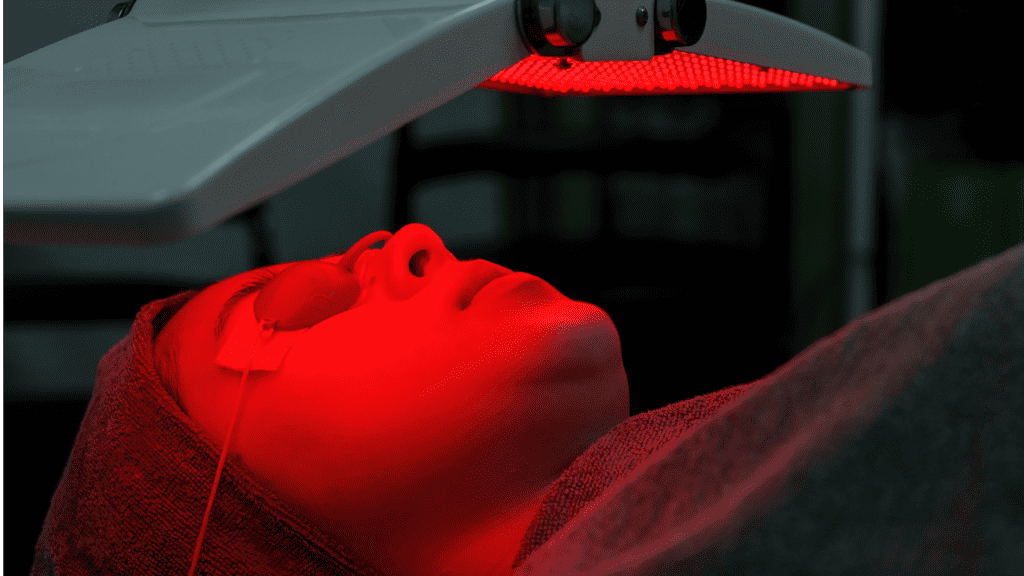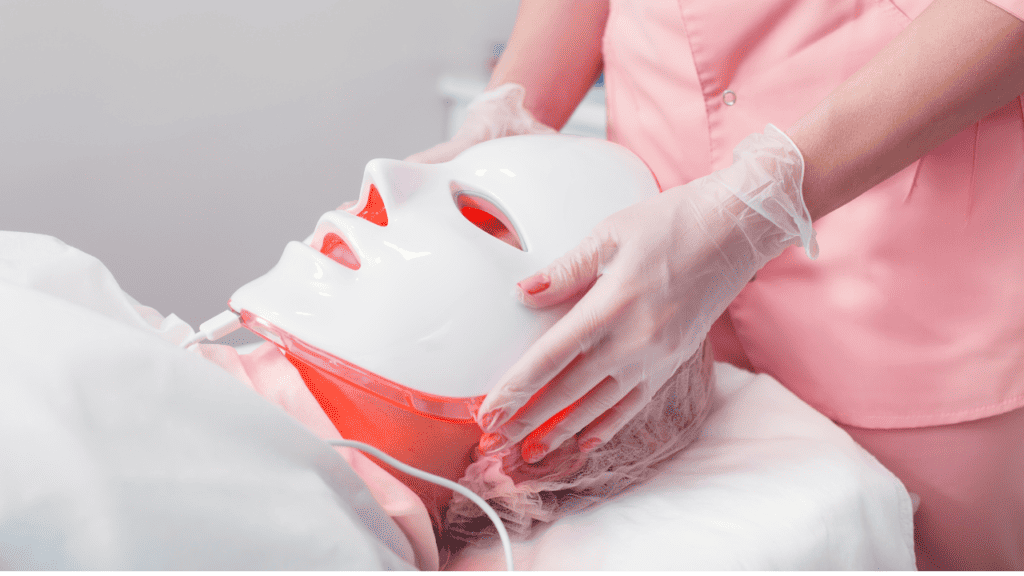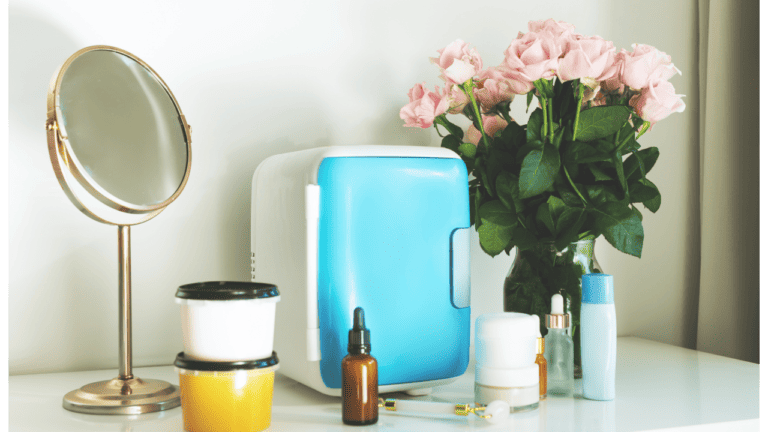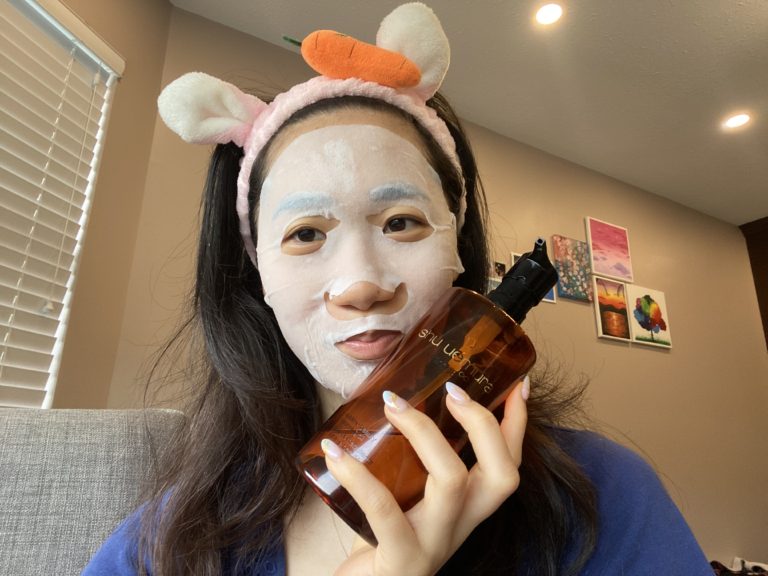Red light therapy has gained a lot of popularity in recent years for its potential benefits in treating a wide range of conditions, including skin issues, chronic pain, and depression. However, despite its growing popularity, many people report that they are not seeing the results they had hoped for with red light therapy. This can be frustrating, especially if you have invested time and money into this treatment.
There are several reasons why red light therapy may not be working as effectively as it should. Understanding these reasons can help you troubleshoot and enhance your red light therapy experience to achieve better results. In this article, we will explore some of the most common reasons for the ineffectiveness of red light therapy and provide tips on how to fix them. We will also discuss some advanced topics in red light therapy and address some frequently asked questions.
Key Takeaways
- Red light therapy may not be working due to factors such as incorrect usage, low-quality devices, and underlying health issues.
- Troubleshooting and enhancing red light therapy can involve adjusting your treatment plan, upgrading your device, and addressing any underlying health issues.
- Advanced topics in red light therapy include combination therapy, dosing, and potential side effects.
Understanding Red Light Therapy

Basics of Red Light Therapy
Red light therapy (RLT) is a non-invasive treatment that uses low-level red or near-infrared light to stimulate the cells of the body. It is commonly used to treat skin conditions, joint pain, and muscle soreness. The treatment is painless and does not produce heat or UV radiation.
Scientific Principles Behind RLT
RLT works by stimulating the mitochondria in the cells of the body. Mitochondria are responsible for producing energy in the cells, and RLT can help increase their activity. This leads to increased production of ATP, which is the primary source of energy for the cells.
RLT can also help stimulate the production of collagen, which is a protein that gives the skin its structure, strength, and elasticity. Collagen production decreases as we age, which can lead to wrinkles and sagging skin. RLT can help increase collagen production, which can help reduce the signs of aging.
Benefits of Red Light Therapy
RLT has been shown to have a variety of benefits, including:
- Reducing inflammation in cells
- Promoting healing of wounds and injuries
- Improving skin health and reducing the signs of aging
- Reducing joint pain and muscle soreness
- Boosting energy levels and improving mood
RLT works by a process called photobiomodulation, which involves the use of light to stimulate the cells of the body. The wavelength of the light used in RLT is important, as different wavelengths have different effects on the body. Red light therapy typically uses wavelengths between 600 and 1000 nanometers (nm).
While RLT is generally considered safe, there are some potential side effects, such as eye damage and skin irritation. It is important to follow the manufacturer’s instructions and to use protective eyewear when using RLT devices.
In summary, RLT is a non-invasive treatment that uses low-level red or near-infrared light to stimulate the cells of the body. It can help reduce inflammation, promote healing, improve skin health, reduce joint pain and muscle soreness, and boost energy levels. While generally safe, it is important to follow the manufacturer’s instructions and to use protective eyewear when using RLT devices.
Common Reasons for Ineffectiveness

Red light therapy is a promising treatment for various medical and cosmetic conditions. However, some people may not experience the expected benefits of this therapy. Here are some common reasons why red light therapy may not be working as expected.
Incorrect Usage
One of the most common reasons for the ineffectiveness of red light therapy is incorrect usage. Many people do not follow the guidelines for using red light therapy devices, which can lead to suboptimal results. For example, some people may use the device for too short a time or at the wrong distance from the skin. It is important to follow the manufacturer’s instructions carefully and to consult a healthcare professional if necessary.
Inadequate Device Quality
Another reason why red light therapy may not be effective is the quality of the device. Low-quality devices may not emit enough light or may emit light at the wrong wavelengths. It is important to choose a high-quality device that emits light at the appropriate wavelengths for the intended purpose.
Improper Wavelengths
The effectiveness of red light therapy depends on the wavelength of the light used. Different wavelengths penetrate the skin to different depths and have different effects on the body. Using the wrong wavelength can lead to suboptimal results. For example, red light therapy for skin rejuvenation typically uses wavelengths between 600 and 700 nanometers, while red light therapy for pain relief typically uses wavelengths between 800 and 900 nanometers.
Insufficient Treatment Sessions
Red light therapy is a cumulative therapy, meaning that the benefits accrue over time. One reason why red light therapy may not be effective is that the person has not had enough treatment sessions. It is important to follow the recommended treatment protocol for the specific condition being treated and to be patient.
In conclusion, red light therapy can be an effective treatment for various medical and cosmetic conditions. However, it is important to use the device correctly, choose a high-quality device that emits light at the appropriate wavelengths, and follow the recommended treatment protocol.
Troubleshooting Red Light Therapy

Red Light Therapy (RLT) is a highly effective treatment for a variety of conditions, including skin issues, pain management, and mood disorders. However, if you’re not seeing the results you were hoping for, it can be frustrating. Here are some troubleshooting tips to help you get the most out of your RLT routine.
Assessing Your RLT Routine
One of the most common reasons RLT may not be working is due to an inadequate routine. If you’re not using your RLT device as directed, you may not be receiving the full benefits. Be sure to follow the manufacturer’s guidelines for treatment duration, frequency, and distance from the device. Additionally, it’s important to ensure that you’re using the correct wavelength for your specific needs.
Adjusting Treatment Parameters
If you’ve been using your RLT device as directed and still not seeing results, it may be time to adjust your treatment parameters. This could include increasing the duration or frequency of your sessions, or changing the distance between your skin and the device. It’s important to make these adjustments gradually and monitor your progress to determine what works best for you.
Upgrading Your RLT Equipment
If you’ve been using the same RLT device for a while and not seeing results, it may be time to upgrade. Newer devices may offer more powerful or specific wavelengths, which can improve the effectiveness of your treatment. Additionally, if you’re using an older device, it may not be as safe or reliable as newer models.
Consulting with Professionals
If you’ve tried all of the above troubleshooting tips and still not seeing results, it may be time to consult with a professional. A doctor or dermatologist can help determine if RLT is the right treatment for your specific condition, and offer guidance on treatment parameters and safety guidelines. Additionally, they may be able to recommend specific RLT devices or treatment plans that are tailored to your needs.
Enhancing RLT Effectiveness

Red light therapy (RLT) is a non-invasive treatment that has been shown to improve skin issues, wound healing, and collagen production. However, some individuals may not see the desired results from RLT. In this section, we will explore some ways to enhance the effectiveness of RLT.
Optimizing Treatment Environment
The treatment environment can play a role in the effectiveness of RLT. To optimize the treatment environment, individuals should ensure that the RLT device is placed at the recommended distance from the skin. Additionally, individuals should ensure that the treatment area is clean and free of any lotions, creams, or other products that may interfere with the RLT.
Combining RLT with Other Treatments
Combining RLT with other treatments may enhance its effectiveness. For example, RLT can be combined with microneedling or other skin treatments to improve collagen production and skin rejuvenation. However, individuals should consult with a healthcare provider before combining RLT with other treatments to ensure safety and effectiveness.
Lifestyle Factors Influencing RLT
Certain lifestyle factors may influence the effectiveness of RLT. For example, smoking may reduce the effectiveness of RLT by reducing blood flow to the skin. Additionally, individuals should ensure that they are well-hydrated and have a healthy diet to support skin health and wound healing.
Maintenance and Consistency
Consistency and maintenance are important factors in the effectiveness of RLT. Individuals should follow the recommended treatment schedule and ensure that the RLT device is properly maintained. Additionally, individuals should ensure that they are using a safe and effective RLT device, such as a low-level laser therapy device.
In conclusion, enhancing the effectiveness of RLT requires optimizing the treatment environment, combining RLT with other treatments, addressing lifestyle factors, and maintaining consistency. By following these recommendations, individuals may see improved results from RLT.
Safety and Side Effects
Red light therapy is generally considered safe, but like any medical treatment, it is not completely risk-free. It is important to understand the potential risks and side effects associated with red light therapy before starting treatment.
Understanding Potential Risks
While red light therapy is generally considered safe, it can cause side effects in some people. These side effects can include redness, inflammation, and irritation of the skin. In rare cases, red light therapy can also cause burns or blisters.
It is important to talk to a doctor or dermatologist before starting red light therapy, especially if you have sensitive skin or a history of skin problems. They can help you understand the potential risks and benefits of red light therapy and determine if it is the right treatment for you.
Managing Side Effects
If you experience redness, inflammation, or other side effects from red light therapy, there are several things you can do to manage them. First, try reducing the intensity or duration of your treatments. You can also try using a lower wavelength of light or covering your skin with a thin layer of cloth during treatment.
If your side effects persist or become more severe, it is important to talk to your doctor or dermatologist. They can help you determine the underlying cause of your side effects and recommend additional treatments or adjustments to your red light therapy regimen.
When to Avoid Red Light Therapy
While red light therapy is generally safe, there are some cases where it may not be appropriate. For example, if you have a history of skin cancer or are currently undergoing chemotherapy, red light therapy may not be safe for you.
It is also important to avoid red light therapy if you are pregnant or have certain medical conditions, such as epilepsy or a thyroid disorder. Talk to your doctor or dermatologist before starting red light therapy to determine if it is safe for you.
Case Studies and Research
Red Light Therapy (RLT) has been gaining popularity in recent years as a non-invasive treatment for various health conditions. However, not all RLT treatments are successful. In this section, we will explore the current state of clinical trials, real-world success stories, and ongoing research and developments in RLT.
Clinical Trials on RLT
Several clinical trials have been conducted to determine the efficacy of RLT. One study found that RLT can improve wound healing and reduce pain in patients with osteoarthritis [1]. Another study showed that RLT can be effective in reducing the symptoms of psoriasis [2]. However, the results of these studies are not always consistent, and more research is needed to determine the optimal treatment protocols for different conditions.
Real-World Success Stories
While clinical trials provide valuable insights into the efficacy of RLT, real-world success stories can also be informative. Many people have reported positive results from RLT treatment for conditions such as acne, scars, fine lines, and hair loss. However, it is important to note that individual results may vary, and RLT may not work for everyone.
Ongoing Research and Developments
RLT is a relatively new field, and ongoing research is being conducted to explore its potential uses. For example, NASA has conducted research on the use of RLT for wound healing in space [3]. Other researchers are exploring the use of RLT for hair growth and photobiomodulation, which involves using light to stimulate cellular processes in the body.
In conclusion, while RLT has shown promise in treating various health conditions, it is important to approach it with caution. Clinicians and patients should be aware of the current state of research and use evidence-based protocols to ensure the best possible outcomes.
[1] https://www.ncbi.nlm.nih.gov/pmc/articles/PMC4148276/
[2] https://www.ncbi.nlm.nih.gov/pmc/articles/PMC4631094/
[3] https://www.nasa.gov/centers/marshall/news/news/releases/2003/03-140.html
Advanced Topics in RLT
Red Light Therapy in Dermatology
Red light therapy has been used in dermatology to treat a variety of skin conditions, including acne, rosacea, and psoriasis. Dermatologists have found that RLT can be effective in stimulating collagen production, reducing inflammation, and improving skin texture. However, it is important to note that RLT may not work for everyone and that results may vary depending on the individual’s skin type and condition.
RLT for Chronic Conditions
RLT has also been studied as a potential treatment for chronic pain conditions such as osteoarthritis and tendinitis. According to a study published in the journal Pain Research and Management, RLT was found to be effective in reducing pain and improving function in patients with knee osteoarthritis. However, more research is needed to determine the long-term effects of RLT on chronic pain.
Innovations in RLT Technology
In recent years, there have been several innovations in RLT technology, including the development of low-power laser therapy and soft laser therapy. These new technologies use lower levels of light energy than traditional RLT devices, making them safer and more comfortable for patients. Additionally, wearable RLT devices have become increasingly popular, allowing patients to receive treatment at home.
Despite these innovations, it is important to note that RLT may not work for everyone and that results may vary depending on the individual’s condition and the specific type of RLT device used. Patients should always consult with a healthcare professional before starting any new treatment regimen.
Frequently Asked Questions
What factors could be diminishing the effectiveness of my red light therapy sessions?
There are several factors that could be diminishing the effectiveness of red light therapy sessions. One common issue is not using the correct wavelength of light. Different wavelengths of light have different effects on the body, and it is important to use the correct wavelength for the desired outcome. Another issue is not using the therapy for a long enough period of time. Red light therapy is not a quick fix and requires consistent use over a period of weeks or months to see results. Additionally, not using a high enough intensity of light can also reduce the effectiveness of the therapy.
How often should red light therapy be applied to the face for optimal results?
The frequency of red light therapy application depends on the individual and the desired outcome. For general skin health and anti-aging benefits, it is recommended to use red light therapy 2-3 times per week. For more specific skin concerns, such as acne or rosacea, it may be necessary to use the therapy more frequently. It is important to follow the manufacturer’s instructions and not overuse the therapy, as overuse can lead to negative side effects.
Is there a risk of overexposure to red light therapy, and how can it be prevented?
While red light therapy is generally safe, there is a risk of overexposure if the therapy is used for too long or at too high of an intensity. Overexposure can lead to skin damage, burns, and other negative side effects. To prevent overexposure, it is important to follow the manufacturer’s instructions and not exceed the recommended time or intensity. It is also recommended to wear protective eyewear during the therapy to prevent eye damage.






